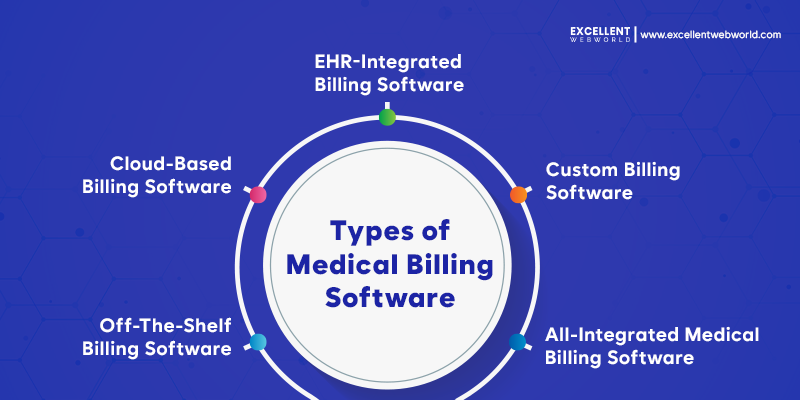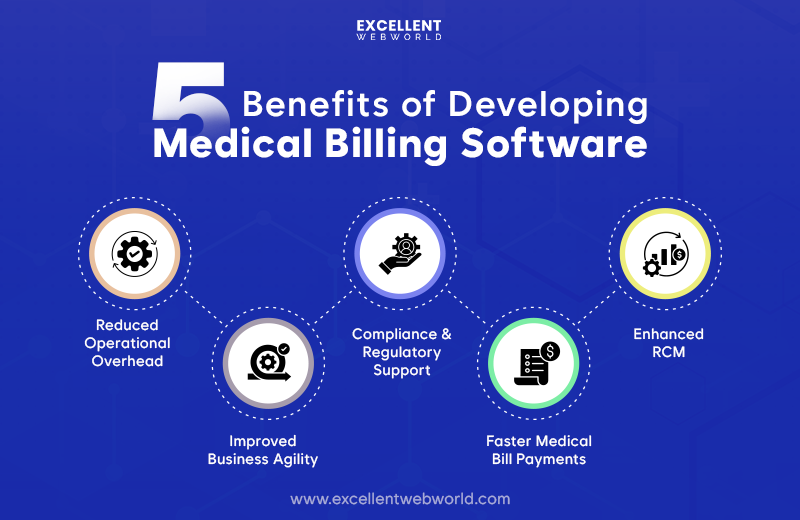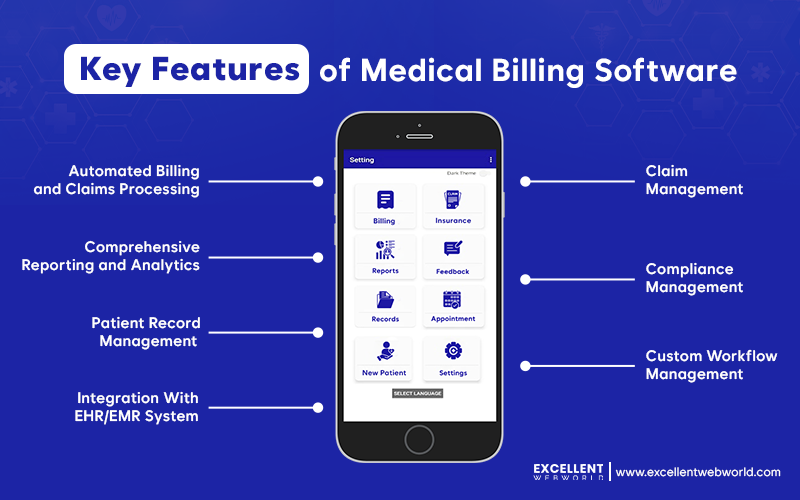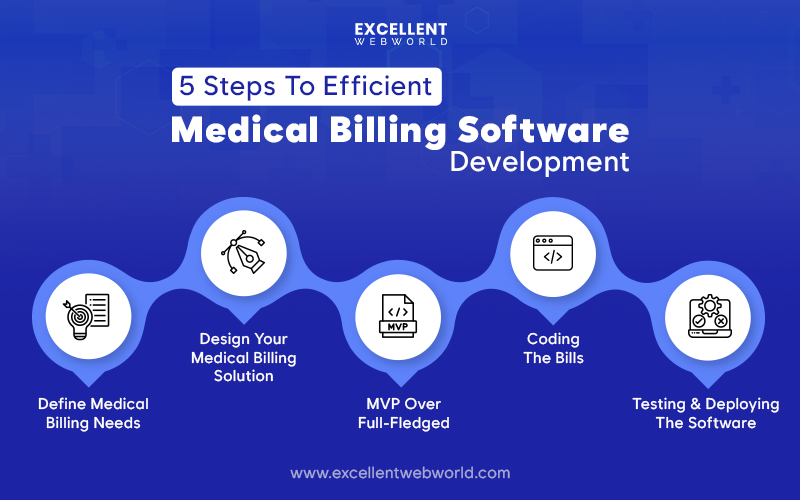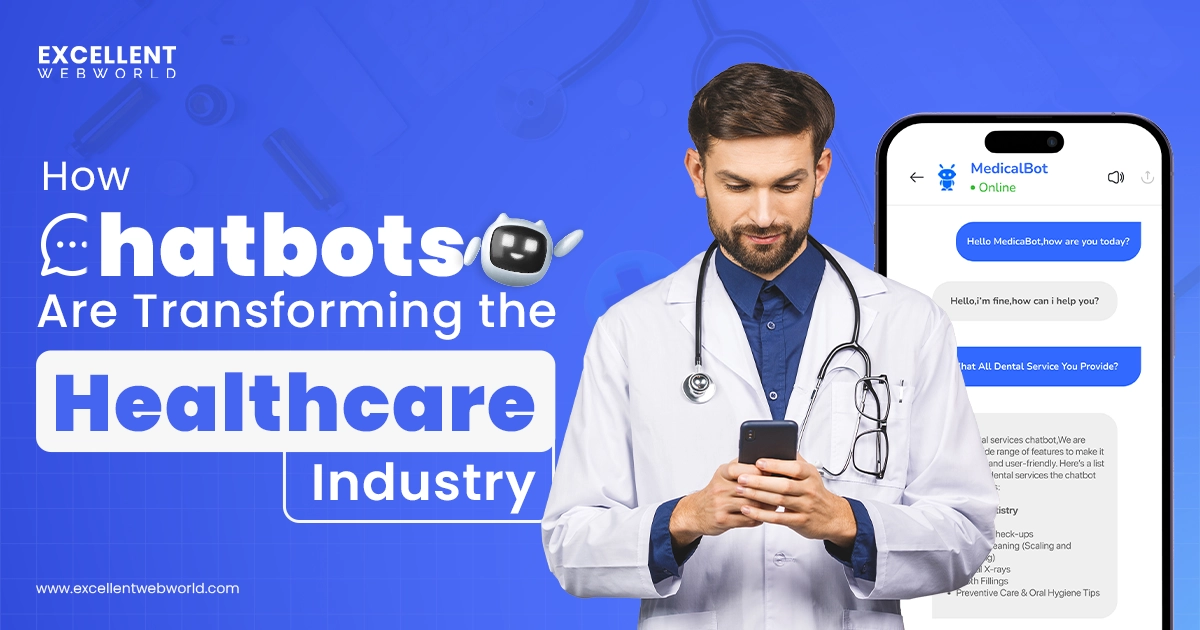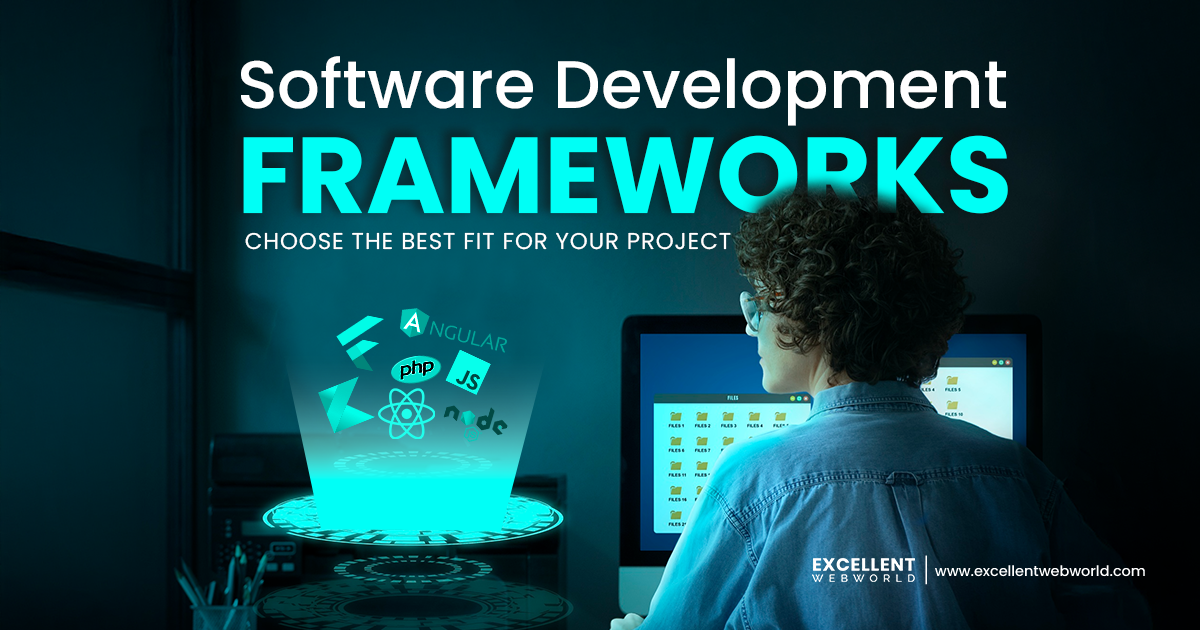Medical practitioners and healthcare facilities often struggle with three critical challenges: invoicing errors, delayed reimbursements, and navigating complex billing regulations. A well-developed medical billing software can streamline operations by minimizing manual errors, accelerating reimbursements, and ensuring regulatory compliance.
But how exactly does medical billing software help?
With nearly 90% of Americans covered by health insurance, adhering to insurance protocols and data protection laws is vital. It’s not just about fixing code entry errors—you need a system that simplifies patient data management, supports real-time analytics, and integrates seamlessly with other healthcare services.
However, choosing or developing the right solution can feel overwhelming if you’re unfamiliar with medical billing software development.
Don’t worry—this guide covers everything you need to know, from types and features to the cost and development process of medical billing software.
What is Medical Billing Software?
Medical billing software is a digital system that automates the entire healthcare revenue cycle. It optimizes critical operations from billing automation to patient records and claims management. Such software reduces the time and effort needed in healthcare invoicing.
The medical revenue cycle management (RCM) process is complex. A team of professional medical billers and coders manages RCM. It simplifies the RCM process through automation, effective communication, and collaboration.
The impact of automation depends on the type of medical billing solution you use. For example, using EHR-integrated software will help automate patient record management with billing.
However, you must first understand the difference between Epic and Cerner and which EHR systems are better for patient record management.
Innovations like mHealth apps facilitate online payments, making billing more efficient. For streamlined billing, you can develop mHealth apps with EHR integration.
So, if you are considering medical billing software development for your practice, the first step will be to choose the type.
Types of Medical Billing Software
You can develop different types of medical billing software based on specific use cases.
1. Cloud-Based Billing Software
Cloud-based medical billing solutions run on a remote server, allowing you to access data from anywhere. All you need is an authorized computer system and an internet connection. This type of solution offers efficient IT infrastructure, improving data management capabilities.
Advantages of Cloud-Based Medical Billing Software
Disadvantages of Cloud-Based Medical Billing Software
2. Off-The-Shelf Billing Software
Off-the-shelf medical billing solutions help you automate critical activities in RCM. They are pre-packaged and easy to deploy for your medical facility. However, they have limited customization options.
Advantages of Off-the-shelf Medical Billing Software
Disadvantages of Off-the-shelf Medical Billing Software
3. Custom Billing Software
A customized solution can help meet your medical billing software requirements. These benefits of custom software development allow you to customize critical RCM functionalities and ensure the workflow aligns with industry regulations.
Advantages of Custom Medical Billing Solution
Disadvantages of Custom Medical Billing Solution
4. EHR-Integrated Billing Software
This software combines EHR with medical billing functionality to create an efficient system. It allows you to manage your patient’s health records and fine-tune medical billing. Such software also helps improve bill accuracy and reduce insurance claim denials.
Advantages of EHR-Integrated Billing Solution
Disadvantages of EHR-Integrated Billing Solution
5. All-Integrated Medical Billing Software
An all-integrated medical billing software offers a comprehensive suite of functionalities. It allows you to integrate all your medical services and functionalities with a billing system. This includes EHR, telemedicine apps, administrative management apps, and more.
Advantages of All-Integrated Billing Solutions
Disadvantages of All-Integrated Billing Solutions
Each type offers specific advantages and disadvantages. However, you must know the benefits of building a custom solution for your practice.
5 Benefits of Medical Billing Software Development
Here are some of the major significant of custom software for medical billings,
1. Reduced Operational Overhead
Leveraging medical billing software development can reduce the operational burden. Two of the most significant operational overheads are,
You can optimize medical management and billing solutions using custom software based on your RCM. Leveraging the insurance mobile app development and integrating billing software, you can automate the generation and submission of claims.
This reduces the time and effort needed to check claim validity. It also generates invoices faster by automatically assigning the codes to services.
2. Improved Business Agility
The medical and healthcare space keeps changing. Doctors and professionals often introduce new medical practices. Plus, there have been changes in the insurance industry’s regulations over time. Accommodating all these changes requires an adaptive medical billing system. Such flexibility is possible when choosing custom billing systems for your healthcare services.
Custom solutions allow you to build new features as market changes occur. For example, you can integrate AI into healthcare services to enhance billing. This improves your business agility and provides a competitive advantage.
3. Enhanced RCM
Such systems have many features to track claims, resolve denials, and generate financial reports. They allow medical practitioners and hospital administrators to optimize their revenue. Moreover, healthcare service providers can identify critical areas of improvement using this software.
Medical billing software reduces manual errors and minimizes insurance claim rejections. It centralizes patient information and helps organize data for better analytic efficiency.
4. Faster Medical Bill Payments
Medical billing systems automate different aspects of the RCM, ensuring faster payments. Most payment delays are due to insurance claim denials and erroneous codes. Hospital administrators can use medical billing software to reduce manual code errors. Reduced errors will ensure claims validation quicker, leading to faster reimbursements.
5. Compliance And Regulatory Support
Such billing systems ensure updates based on changing regulatory insurance standards. These apps also ensure compliance by automating the submission of crucial insurance documents. You can leverage healthcare app development company to build systems with built-in compliance features that avoid breaches of regulatory guidelines.
Medical billing software flags non-compliant codes during bill generation. This reduces the risk of insurance rejection.
Every medical billing process has multiple steps, each with a specific activity. How effectively your software features accommodate these activities plays a crucial role in your healthcare software modernization and makes all the difference.
Key Features of Medical Billing Software
Here are some of the features to consider while planning healthcare software development for medical billing,
Automated Billing and Claims Processing
Invoicing can be daunting for your medical staff, especially when the patient volume is high. This feature reduces the workload burden on staff and enables them to focus on patient care.
It captures all data from patient registration to billing, claims submission, and reimbursements. This data can help optimize the billing process. It allows us to set custom rules for each bill and automatically apply them to all the invoices.
Comprehensive Reporting and Analytics
This feature can be a differentiator for your medical practice in a competitive market. It allows practitioners to analyze their revenue cycle and identify areas of improvement. Plus, finance teams can use custom reports to ensure better expense oversight. Analyzing the costs and revenue streams will help practitioners optimize earnings.
Claim Management
This feature automates claim creation, submission, and tracking. It is designed to ensure minimum errors. One code error can lead to claims denial. Reducing errors in codes ensures optimal claim submissions. So, here is how it works,
The claim management feature automates patient registration, code addition, and submissions.
Patient Record Management
Patient records are crucial for medical practitioners and hospital staff. It helps in tracking all the services patients receive. This includes records of prescriptions, medications, test results, and special care services. Including patient record management features helps streamline healthcare operations. In particular, larger hospitals can use this feature for efficient patient management.
Compliance Management
There are many different regulations in place to protect patient rights. Medical billing systems need to comply with these regulations. This means medical billing software development is complete with a compliance management feature.
So, what are the key compliances?
And how do these features ensure it?
Some of the critical compliances that a medical billing solution must ensure are,
Important Note: CMS (Centers for Medicare and Medicaid Services) provides guidelines for medical billings. If you are a hospital admin or medical practitioner, you must ensure compliance with HIPAA and CMS guidelines.
A compliance management feature helps medical billing software comply by,
Integration With EHR/EMR System
EHR covers comprehensive patient data across healthcare providers. In contrast, EMR is a patient record maintained by a single healthcare service provider. However, for a medical billing system, integrating both EHR and EMR is essential.
This feature allows EHR and EMR integration into your medical billing solution. These records contain information on patient demographics, medication, immunizations, and allergies. Another key benefit of this feature is improved accuracy. EHR/EMR integration ensures correct coding in medical bills.
Custom Workflow Management
This feature helps hospital management manage operational workflows. It comes with advanced notifications and alert features. With real-time notifications, staff is notified about pending bills and rejected claims.
Customized workflow management helps streamline the RCM process. It includes automation of critical activities, real-time collaborations, and improved patient care.
You have the features defined now. It’s time to build medical billing software for your healthcare business.
5 Steps To Efficient Medical Billing Software Development
Developing billing software involves understanding the requirements, designing the system, developing the code, testing thoroughly, and deploying it.
1. Define Medical Billing Needs
Medical billing software development process needs strategic considerations like,
Defining the critical requirements for your billing software development is crucial. It forms the basis of how your medical software development will be structured. This step also includes the creation of a roadmap. First, create a blueprint of the entire software development process. Based on the blueprint plan processes, design the wireframe and analyze it.
2. Design Your Medical Billing Solution
The wireframe of your medical billing system represents a structural view. However, you will need a robust design that follows healthcare UI/UX trends to build medical billing software. This step includes creating mockups of software UI designs. It will help you understand how the software will look and feel.
You can also view the user flow through mockups. Understanding the flow and user journey is crucial. Because it helps you understand how your medical staff will use the software. Once you have an idea of how your billing system experience will be, it’s time to develop a prototype.
3. MVP Over Full-Fledged
A key strategy for reducing cost and risk is to use a Minimum Viable Product (MVP). This approach involves building a beta version of the software. Once you make the MVP, test it and allow staff members to use the software.
MVP helps you understand how your software will work and optimize the RCM. Next, you can follow an agile approach to create incremental iterations. With each iteration, your medical billing system will offer better functionalities and experience.
This approach is also flexible, so you can add new features as insurance regulations or medical practices change.
4. Coding The Bills
Coding medical software involves more than just source code. You need to integrate a robust system of integrating CPT and ICD codes. These are medical codes crucial for invoicing and claims submission. The accuracy of the coding is essential for faster reimbursements. So, the codes need to be assigned based on ICD-10 updates and CMS guidelines.
To achieve this, you need to design a system that can automatically assign codes. It will reduce the manual errors and improve accuracy. Developing and integrating such a system into the medical billing solution can be complex. This is why you need software development experts.
5. Testing And Deploying The Software
If you use an agile approach, testing is a continuous process. Test every iteration. Integrate feedback from medical staff using the software. This will help improve the next iteration. Repeat the same iterative cycle until you achieve a full-fledged version. After thorough testing, deploy the software on the respective platform.
However, deploying the medical billing solution is not the end. You need continuous monitoring of the system. Periodically update the codes and features per changes in the regulations. Plus, tune software performance based on monitored data.
By now, you know the medical software development process is continuous. But you need to understand that it requires a specific tech stack. With the right software technology, you get optimal performance.
Tech Stack You Need For Medical Billing Software Development
Here is the tech stack you will need to build a medical billing software,
| Frontend Tech Stack | React, Angular, Vue.Js, HTML/CSS |
| Backend Technologies | Python, Node.Js, Spring Boot, Django/Flask, Express.Js |
| Database Management | PostgreSQL, MySQL, NoSQL Databases, MongoDB, Amazon Redshift, Google BigQuery |
| APIs and Integration | RESTful APIs, HL7/FHIR Standards |
| Security and Compliance | OAuth 2.0, JWT (JSON Web Tokens) |
| Hosting and Deployment | AWS, Azure, or Google Cloud, Docker, Kubernetes |
| Monitoring and Analytics | Prometheus or Grafana, ELK Stack (Elasticsearch, Logstash, Kibana) |
What’s missing with everything sorted, from how to build medical billing software to the tech stack? Oh, the most crucial part- “Cost.”
What is the Cost of Developing a Medical Billing Software?
Determining the cost of medical billing software requires an analysis of multiple factors. From the features you need to the integration of EHR/EMR systems, cost varies based on specific requirements.
Cost Based on Feature Requirements
| Feature | Complexity | Cost |
|---|---|---|
| User Registration/Login | Low | $2,000-$5,000 |
| Patient Management | Medium | $15,000-$30,000 |
| Claim Submission | High | $25,000-$45,000 |
| Reporting and Analytics | High | $45,000-$85,000 |
| Integration with EMRs | High | $52,000-$105,000 |
What features you need for your billing system can impact the development budget. For example, a feature automatically adding billing codes based on patient data can cost more. You will need a system that can fetch data, analyze it, and assign codes accordingly.
You must also consider the type of medical billing software your practice needs. For example, if you choose cloud-based software, the infrastructure cost will be lower than other types. The type impacts cost directly and also impacts feature complexity.
So, developing a medical billing system with EHR/EMR integration will be more complex than creating a cloud-based solution. However, some features are inherently complex. For example, the reporting and analytics feature in medical billing is complex. Such a feature will require data collection from multiple sources and analysis and processing.
Multi-Service Integration Costs
Another major factor that impacts the cost of medical billing software is integrations. Whether you are a medical practitioner or a large-scale hospital admin, patients need many services. For example, a single hospital can have multiple healthcare services, like,
Each service can have separate software or apps, so you need to integrate them into the medical billing solution. Integration of these services requires custom APIs, environment configurations, and infrastructure, which adds to the cost of developing your billing software.
Development Team Costs
A significant costing factor is the amount software developers charge. If you estimate the medical software development costs, this must be at the top of the list. The cost of hiring a development team to build medical billing software depends on location, engagement model, and specific requirements.
For example, hiring an in-house developer costs more than other approaches. You need to pay your salary and insurance and be offered different benefits. On the contrary, hiring a dedicated team of software developers is more affordable and beneficial.
With a dedicated team model, the outsourcing company is responsible for everything, from hiring the right developers to delivering your project on time. These medical billing solution providers offer better customizations within your budget.
How Does Excellent Webworld Help Build Robust Medical Billing Software?
Many practitioners and hospital admins struggle with the ever-changing healthcare space. Changes in insurance regulations and billing standards require advanced solutions. Medical billing software is one such solution. It helps automate, manage, and process medical billing activities. However, medical software development needs expertise to ensure robust integrations and optimal performance.
This is where Excellent Webworld can help. We have expertise in healthcare software development and assist professionals in providing different medical services. Our team has developed a telemedicine app to connect doctors and patients.
We ensured medical invoicing automation for the app, ensuring secure payments. So, if you want to build medical billing software for your practice or hospital, contact us now.
Frequently Asked Questions
There are different types of medical billing software that you can use. You can choose the option that suits your requirements, from off-the-shelf software to EHR-integrated software.
Some commercially available software is Karep, AdvancedMD, and eClinicalWorks. However, if you need customized billing systems for your healthcare business, contact us, and we will help you build robust software.
Medical billing software development involves,
Medical coding translates healthcare services into standardized codes used for billing purposes. Coders extract billable data from clinical documentation and assign codes according to ICD-10 or CPT regulations. Medical billers then use these codes to create health insurance claims.
Custom medical billing solutions offer the advantages of improved efficiency, accurate bills, and minimal claim rejections. They reduce manual errors and automate critical aspects of your billing process. You can customize the invoicing according to your practice and ensure faster reimbursements.
The cost of medical billing software can range between $30,000 and $150,000+. Significant factors that affect these costs are the complexity of features, the development team, and integration costs.
The timeline for developing medical billing software typically ranges from 3 to 6 months. This duration depends on several factors:

Article By
Paresh Sagar is the CEO of Excellent Webworld. He firmly believes in using technology to solve challenges. His dedication and attention to detail make him an expert in helping startups in different industries digitalize their businesses globally.

